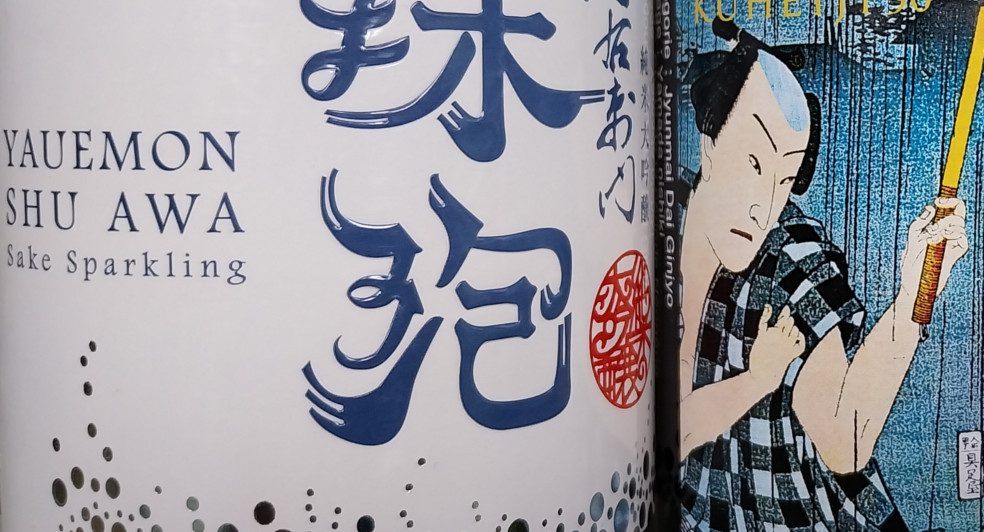Sparkling Sake
2nd March 2023

Wine is made from grapes right? Well yes, that is most certainly correct, but we must also add that not all wines are made from grapes! 24,535 in 1,000 metric tonnes is the annual global grape production as stated by statista in 2021 with China being the leading country by over four times its nearest rival, Italy. Growing grapes is big business of which much of what is grown goes in to make wine from reds, whites, rosé and bubbly.
Outside of the popular ingredient of grapes of which there are said to be well over 10,000 varieties along with around 1,300 being used for making wine, there are plenty more popular edible foods which are used to make wine of which the basis of the production process is fermentation:
Apple
Plum
Red berries / black berries
Kiwi
Pumpkin
Pomegranate
Rice
Honey (mead)
Potato (requiring raisins)
Garlic
and more…
Opens up your mind to what wine can be made of no? Oh, regarding the garlic that you are questioning, it is a yes you can get garlic wine – Let Oz Clarke and James May tell you more about it here from their TV series ‘Oz and Jame’s Big Wine Adventure‘:
Highlighted in bold above is one of the popular foods that wine is made from and this is rice. Though it might sound a touch bizarre, rice wine is a growing in popularity alternative to wines made from grapes – Rice wine is a traditional alcoholic beverage in many parts of Asia and is prepared by fermenting the rice. There are different versions of rice wine and they are locally known by different names. Western countries are an ever increasing export destination for rice wines … Read More at:- https://www.fortunebusinessinsights.com/rice-wine-market-103238
The export market of Sake from Japan has grown over the years with north America being a popular destination. Europe remains relatively lower down the export market scale, though of recent years more and more awareness has been created with dedicated trade and press tastings as well as awards for sake – In the UK there are several sake associations and clubs that both wine professionals and consumers can enjoy so to experience a wide variety of producers and labels.
Sake Sparkling ‘awa’
“My first experience of tasting sake was with a sparkling label. I then soon after attended a vertical tasting of still sake and I learned that each style is quite apart in character. The oldest vintage sake I tasted was from 1974 (I have kept the bottle somewhere in my collection) and the complexity of these wines are quite extraordinary. What I like though with sake is that sparkling is the less intense version and with a more youthful and fruity / floral character plus usually holding less alcohol. It is rather like comparing a fine Champagne with a fine Prosecco, both wonderful fizz examples and both very contrasting in character with Prosecco the lighter style and easier to drink.” Christopher Walkey
My recommendation is to introduce sake to your palate with a sparkling label as it is an easier and fresher version to appreciate the style and flavours of and it holds less intensity and likely less alcohol of around 8% to 12% compared to still which is usually a few degrees higher.
How is sake, that is sparkling, made? Well, rather like sparkling wines made with grapes, over in Japan there are three similar fashions adopted:
- Carbonation
- Tank Fermentation (equivalent to Charmat Method in Sparkling Wine)
- Bottle Fermentation (equivalent to Traditional Method in Sparkling Wine)
So, what does sake taste like? It is important to study both the aromas and flavours for any wine so what expressions can we expect from sake? Listed below are some examples:
Aromas: Hay / grass / soaked rice / floral / white fruits / yeast / nuts / caramel / honey
Flavours: Soaked rice / grains / white fruit flesh / apple / pear / tropical fruits / melon / lychee / white floral / mushroom / soy sauce / tea / cream
Where to purchase sparkling sake online: A great example of a wonderful misty coloured sparkling sake is the Yauemon Shu Awa from The Wasabi Company at only £18 per bottle.
Tasting notes: “Pear skin, pear blossom nose. Soft and silky taste experience with a subtle fizz presence. Pear blossom, white fruit flesh, icing sugar, soaked rice, hay and more.”
Where to purchase sake online: Another sample sent to us was from the Japan Centre with their Kamoshibito Kuheiji Eau de Desir Junmai Daiginjo Sake at only £46 per bottle. Just to note that this is one of the finer range of sake so you will expect an exceptional tasting experience.
Tasting notes: “Silky style almost velvet. Intense on the nose, you can certainly feel the heavier alcohol content throwing out white floral, soaked rice, hay, grains, pear blossom, subtle dried lemon peel, bruised yellow pear flesh. Flavours are deep and once again intense. The longer in the glass the more the nose and palate is delighted. White fruit flesh flavours with white rose petals, soft wood spices, freshly cut oak, fresh water with a creamy limestone.”
The good news is that it is easy to find sake for sale in the UK and especially if you are searching online. There are many distributors as well as sake professionals offering the most wonderful labels with plenty of sound advice for new comers. For me, personally, I consider sake as a wine and one which you should explore, for once you enter this rather lesser known sector of the wine world you will become both intrigued to know more and hence, hooked!
![]()
Christopher Walkey
Co-founder of Glass of Bubbly. Journalist and author focused on Champagne & Sparkling Wines and pairing them with foods.
